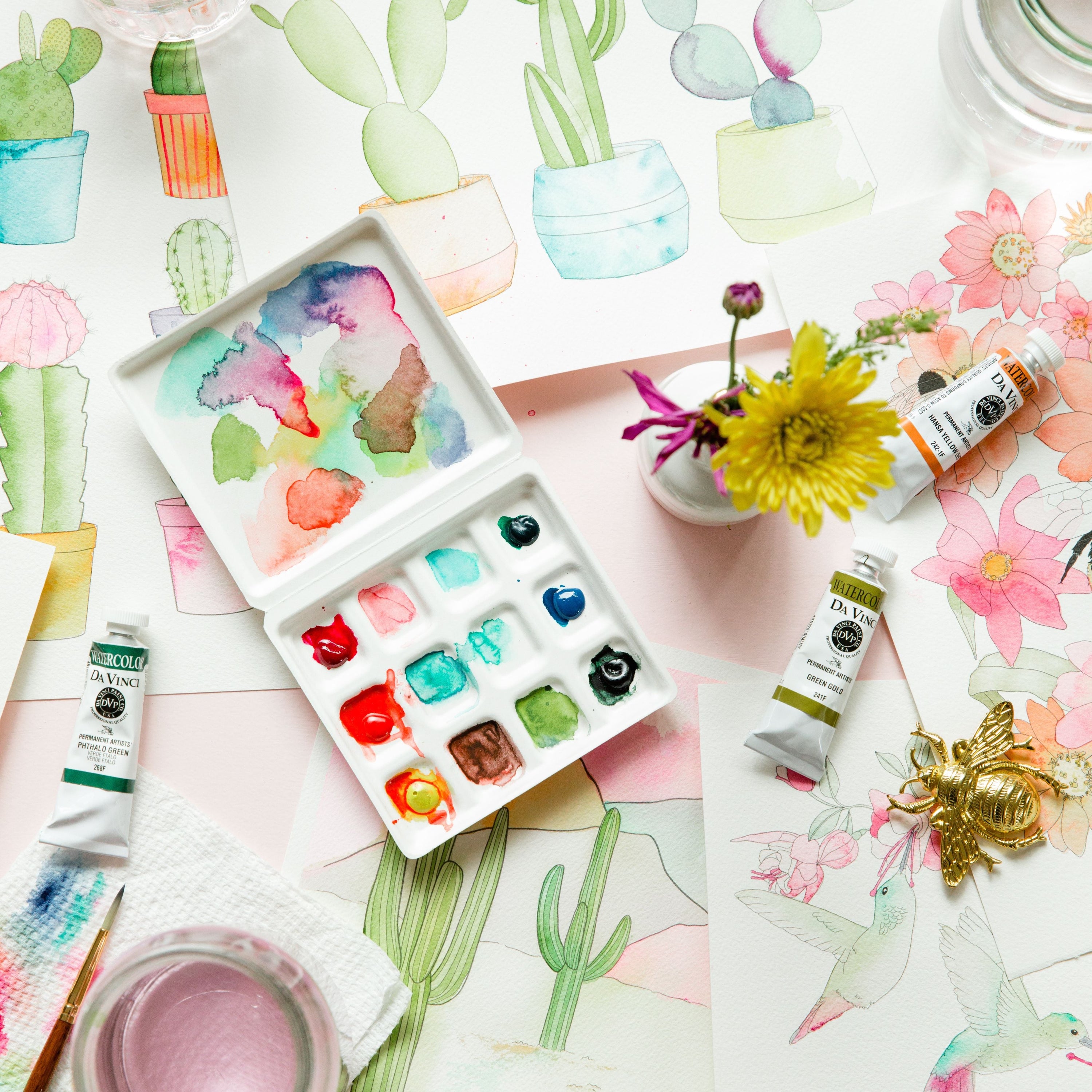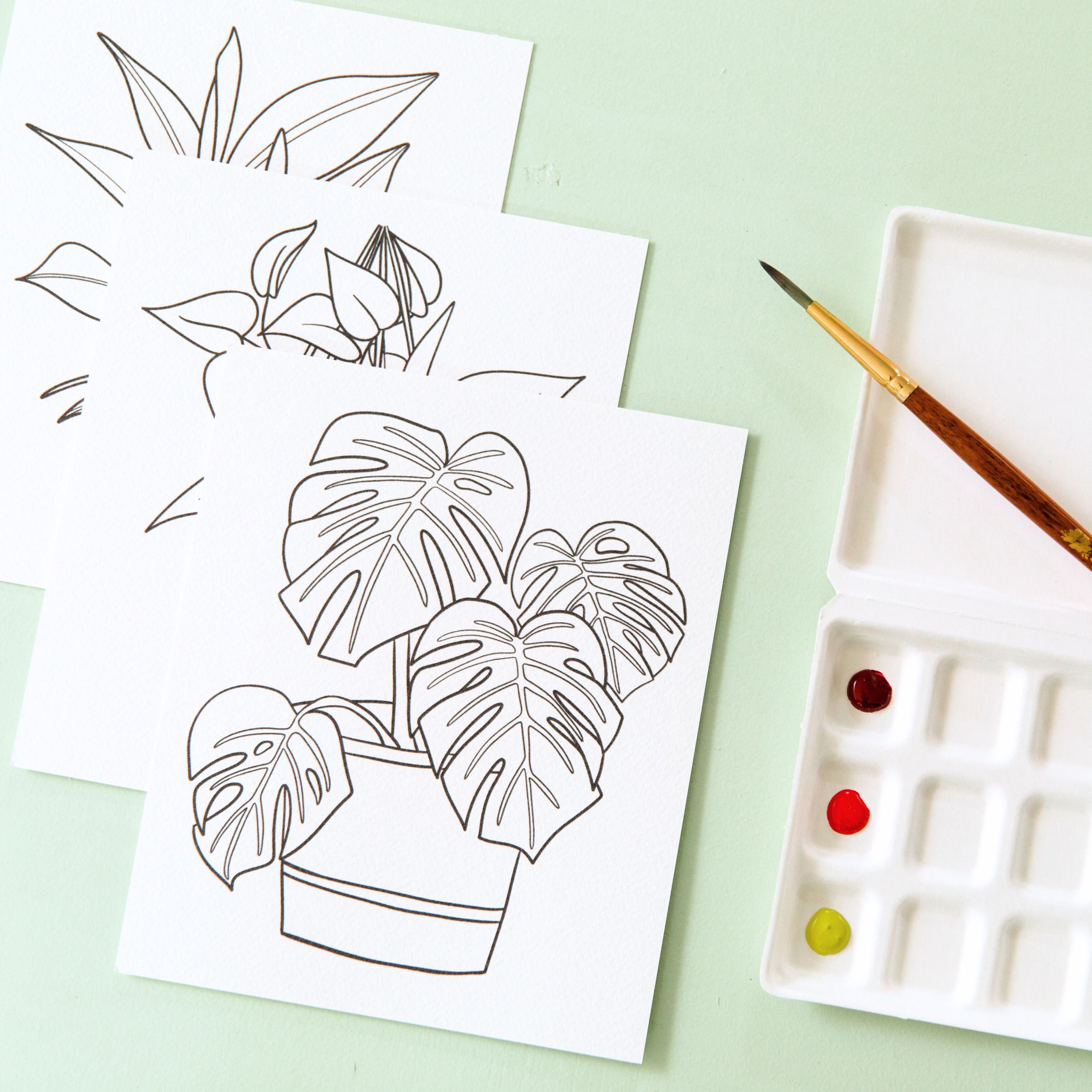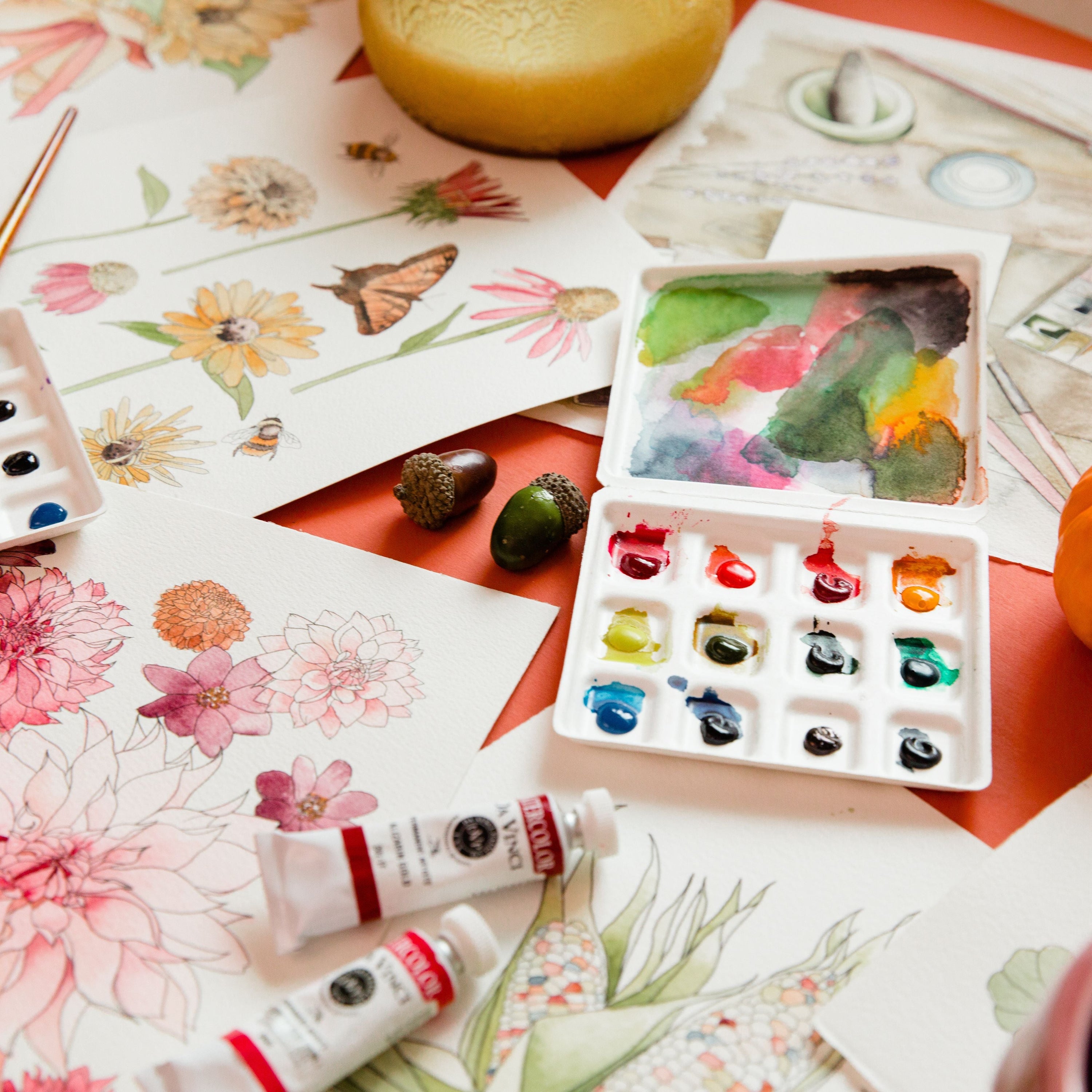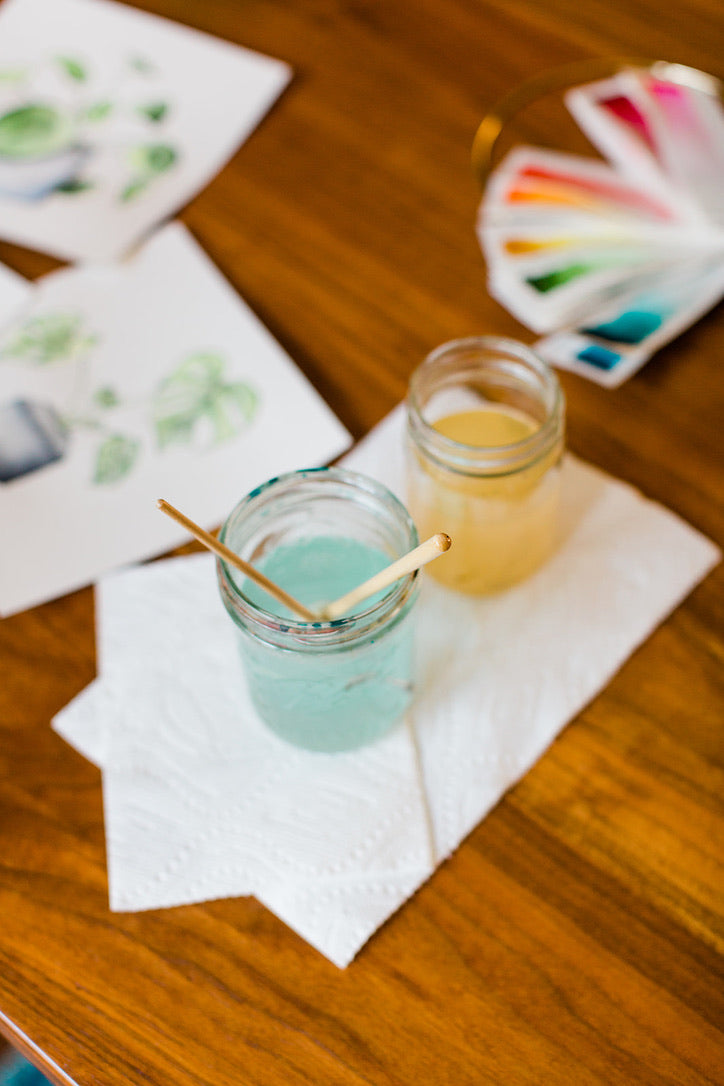

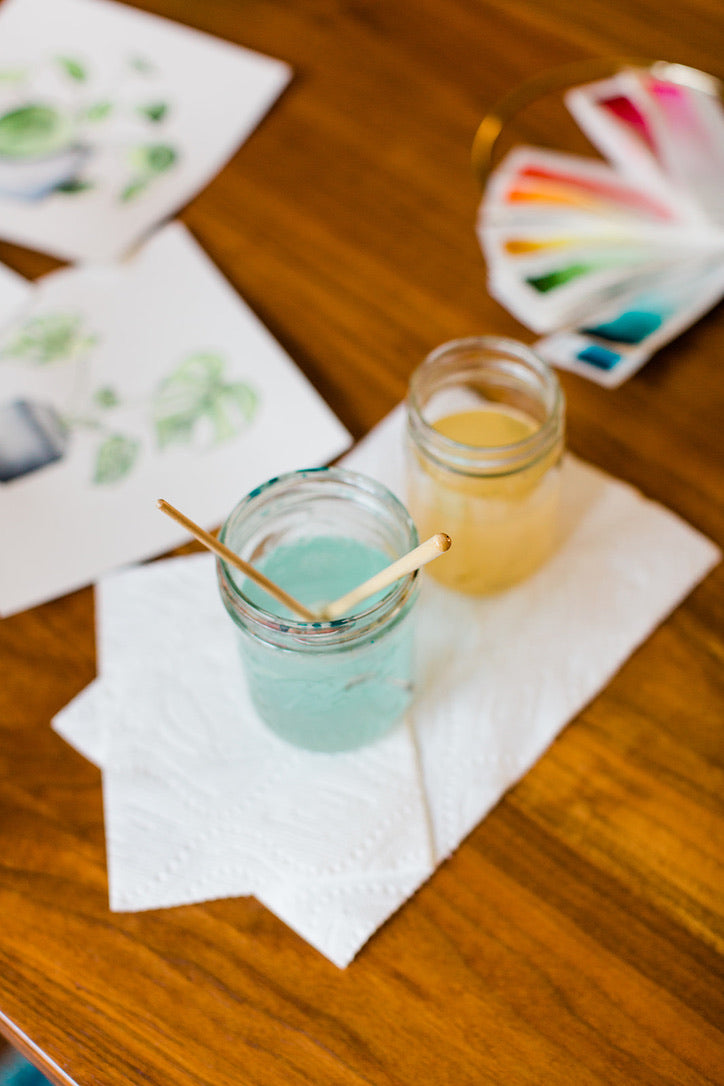
· By KATE TALCOTT
How Water Affects your Watercolor Painting
In order to take your painting to the next level, you’re going to need to learn how water affects your watercolor painting.
As a watercolor artist or wannabe, you're in the unique position of trying to manage water. Or if you’re a little on the controlling side, like this gal, you may be trying to let the water take control. Either way, a good watercolor artist knows how water affects paint, and what you can do to either help or hinder the way of the water.
How Water will Affect your Watercolor Painting
While watercoloring, water has a unique juxtapositional role to play. It both causes problems and creates solutions. Crazy, right!
Once you learn how to control the water while painting, you’ll also be able to unleash its many powers.
Let's discuss them, shall we!?!

Creating Paint Puddles
In your mixing area on your palette you'll create paint puddles, or a mixture of paint and water. When you're covering large areas, make sure you have a large paint puddle ready. Control the saturation of your paint puddle by adding more paint (darker) or more water (lighter).
Depending on the size of your paper and the amount of space you’re covering, your water puddle may be pretty large, or you may want to take it to a deeper palate or you can use my personal faves a soy sauce dish or egg holder. Checkout my egg holder palate in the photo!
The Right Consistency
When mixing up your paint puddles, you're going to want a nice smooth consistency. Think latte, rather than water or a milkshake. I love me a milkshake, and they might bring all the boys to the yard, but they ain’t gonna make for a great painting, so mix your paint puddles thoroughly, and save the ice cream for after then painting is done!
Dirty Water vs. Clean Water
If your water starts to get too muddy or cloudy, it is time to change your water!
It is helpful to have two water cups: one for warm colors (reds, oranges, yellows) and one for cool colors (blues, purples, greens).
Now, I have to be honest. I often get lazy and just use whatever ol’ water is lying around, so it’s up to you on this one – just know that the color of your water can affect your colors! If you want an earthier color, the muddier the water the better ;)
Identifying Wet and Dry Paint
If the paper seems shiny, it is not dry. You can also hover your finger over the page - if it feels cool, like a tiny cool breath, it is still wet.
Common Fixes for Water-y Watercolor Issues
Watercoloring comes with quite a few opes, ahhhs, and oopsie daisies, but it is a remarkably forgiving medium. Use some of these tips to solve these common watercolor woes.
Oops! The Brush is too Dry

Sometimes the problem isn’t the water – it’s with the brush! It may not be absorbent enough.
If your brush is too dry, you need to load your brush up more.
If it keeps happening, you may need a bigger paint puddle, a larger brush to cover a big area, or your brush may not have the capacity for a large amount of water and you'll need a different brush. Check out this video where I'm geeking out over all of my favorite brushes!
Oops! The Paint is too Wet

If your paint is too wet on the page, this can make the pigment slosh around more than you might want and make the watercolor very uncontrollable.
Don’t worry! All is not lost. You can soak up some of the water with a dry paint brush or a corner of a paper towel.
Harsh Lines

I love myself a little easy fix, and this is a good one!
When part of your painting dries unevenly, it can create a harsh line. You can soften this by going over it gently with a damp brush. It's kind of like ironing out the wrinkles!
Oops! I Made a Mistake

Speaking of fixes –
If you make a mistake and the paper is still wet, you can use your brush or a paper towel to gently lift the paint.
If the paint has already dried, you can use a little water and a stiff brush, a colorless blender, a "fix it" brush (Princeton Brushes has one), or even a magic eraser!
Brush and Water Control
When you first start out, watercoloring can make you feel a bit like a messy baker. Try as you might, you always end up with a little too much of this or over mixing that – and it often takes a lot of practice before you get the hang of whatever it is you’re trying to make.
Working on your brush and water control are exactly the same.
It’s going to take some time to make your splatters look unplanned, your washes to look even, and your bleeds to heed to your bidding.
Watercoloring is one of those mediums that you definitely have to ‘get a feel for.’
Practice noticing what it feels like to pick up paint with your brush. If it feels like too much, try tapping the paper towel with the tip of your brush. If it feels like your brush is too dry, make a larger paint puddle.
Keep practicing the same movement or stroke over and over until you gain some consistency in both the depth of color and the shape of the movement.
Watercolor is filled with unexpected delights, so don’t fret or freak out if the water doesn’t behave exactly how you want – remember, it may be an oops, but it’s a beautiful oops!
Happy Painting!
